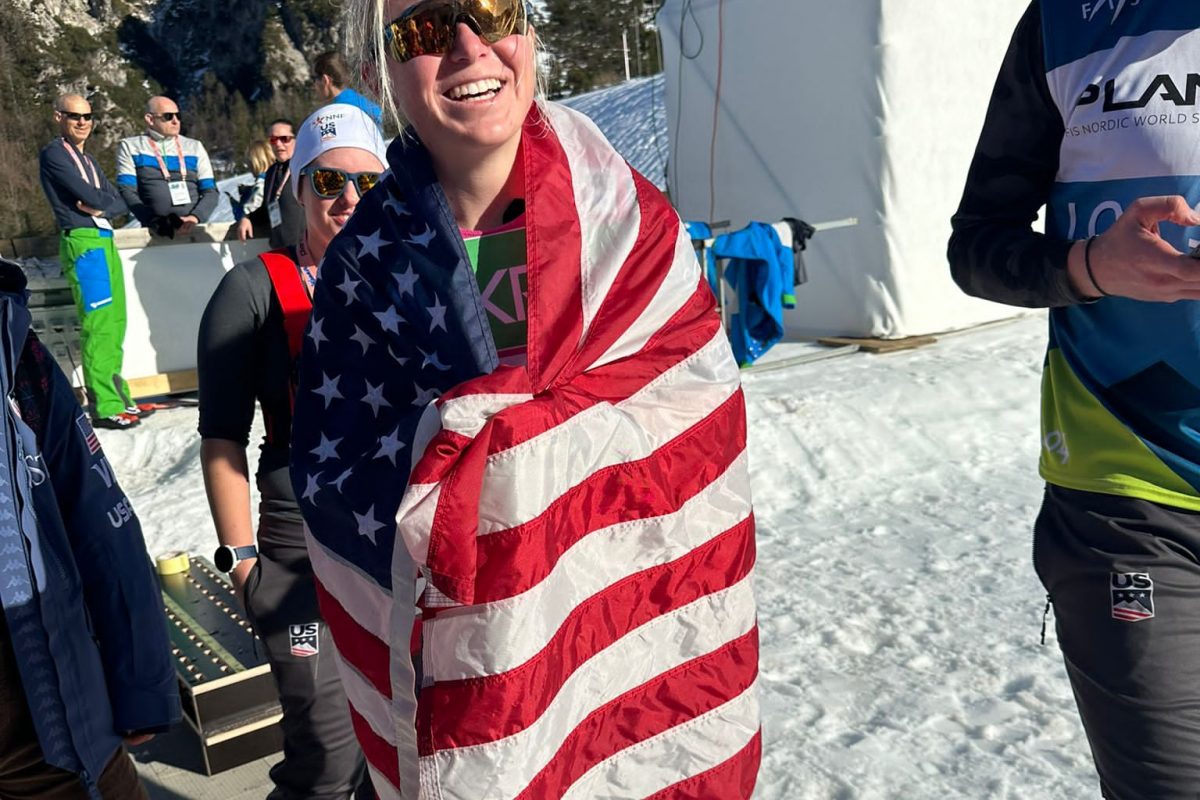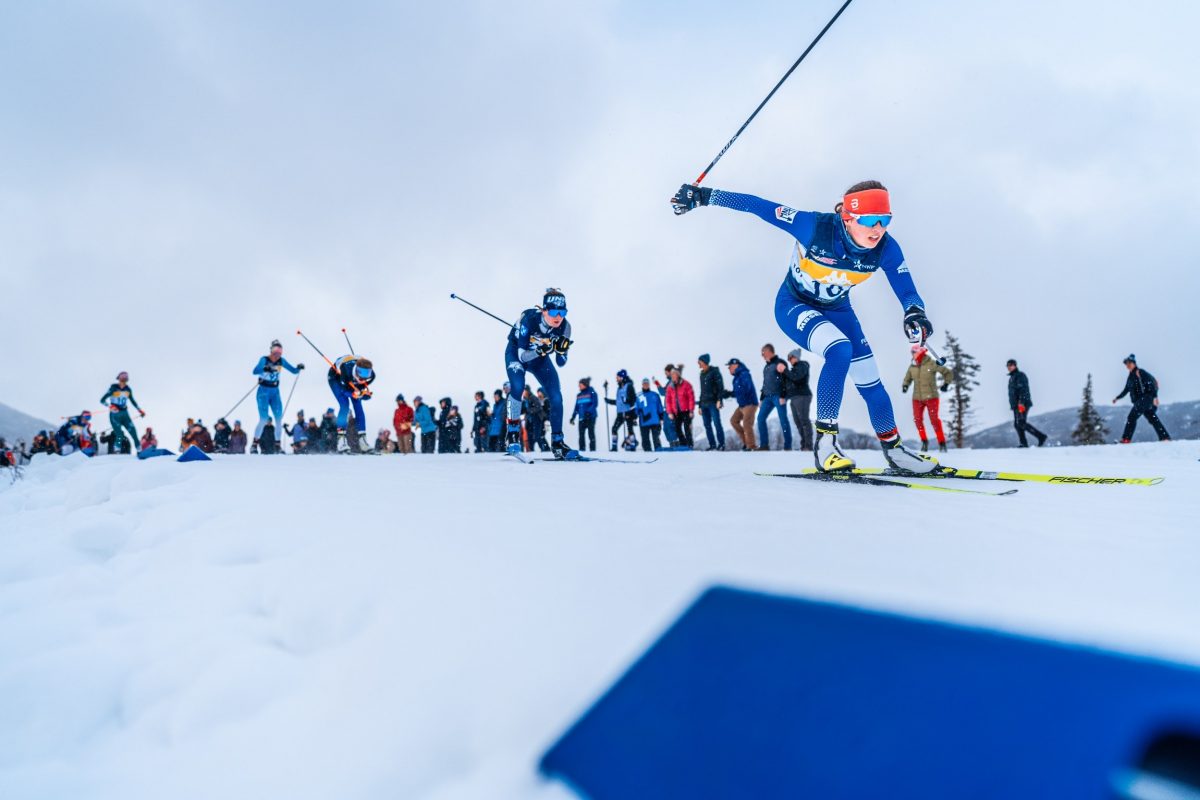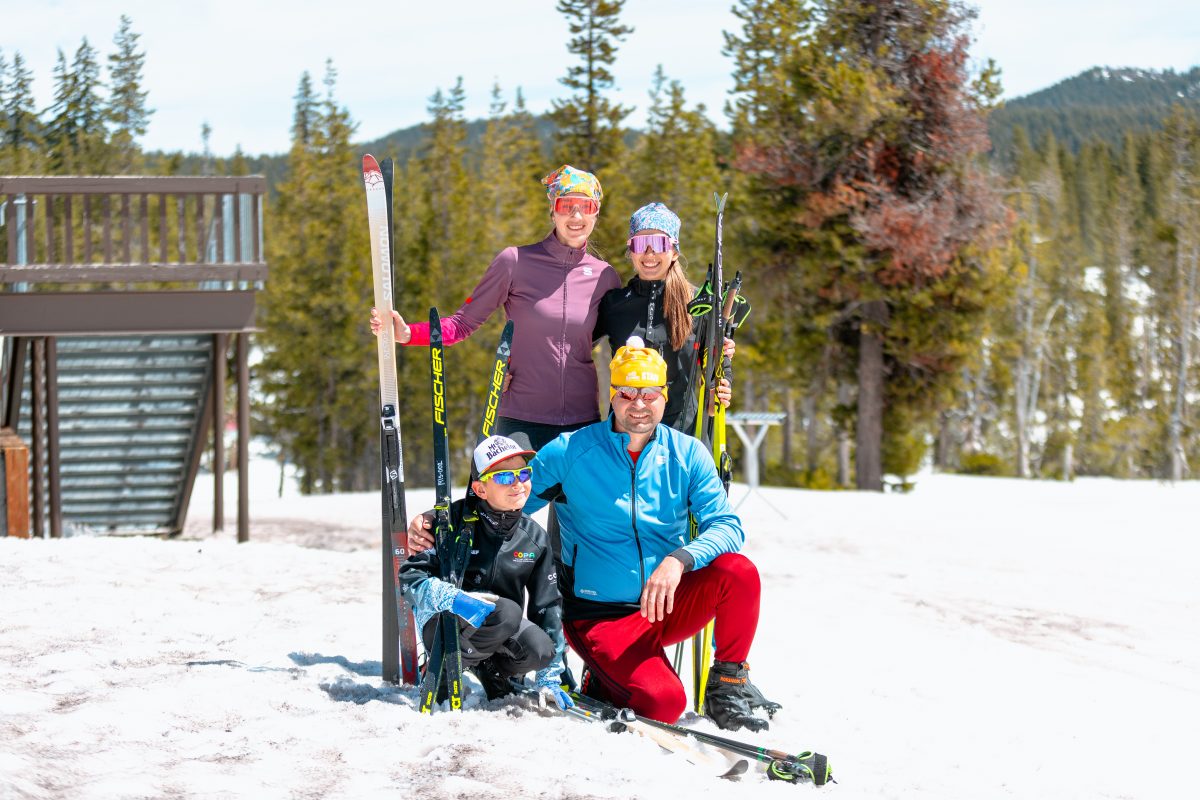
Canada’s hopes for a biathlon medal at the Youth Olympic Games are probably riding on no single athlete more than Calgary’s Stuart Harden.
Harden is one of those athletes who seems to be a junior forever, simply because they find success at such a young age. Last season, he competed in his first World Junior Championships – mostly because before then, he had been too young to qualify. As it was, the then-16-year-old was still technically a year too young for the youth category.
It didn’t stop him from excelling, however. Harden had a top finish of 18th place in the individual race, leading a Canadian team of older athletes.
He continued to race up in age divisions, and at the Canada Winter Games he competed not as a youth but a junior, the designation for 20- and 21-year-olds. There, Harden picked up relay gold and three individual medals.
At Canadian national championships, he was forced to compete in his own age class simply to qualify for the Youth Olympic Games – something Harden appears to have found moderately frustrating. But now that he’s made the team, he’s looking forward to competing against athletes his own age, and has even higher expectations for the results he can achieve.
At 17, Harden is already experienced enough to thank his ski sponsors in interviews, and in a recent piece by Youth Olympic Games Young Reporter Emily Ridlington, he said he was aiming for a podium finish.
FasterSkier checked in with the young star over e-mail.

FasterSkier: How did you get into skiing when you were growing up?
Stuart Harden: Well, I’ve been cross country skiing since I was about eleven when my father enrolled me in a biathlon bears program at Canada Olympic Park. My family had an air rifle as a child that we’d shoot in the yard, and I’d always been the best kid with it, so once we moved to Canada with all our snow my parents introduced me to cross country skiing and biathlon. I’d never heard of cross country skiing before then, and now I spend most of my time on the trails.
FS: What made you want to compete in biathlon?
SH: My first competitive year in biathlon was when I was twelve years old and I had no role models or older siblings to follow into the sport. I didn’t know anyone who did it, so I have only my parents to blame for where I am now.
FS: You’re training out of Canmore, along with a lot of the other biathletes going to Innsbruck – what’s in the water there!?
SH: Funny – I have to give most of the credit to my long time coach John Jaques. He’s played one of the largest roles in my development and has given me great training opportunities and advice over the years. Being in such a nordic-oriented town gives me access to many resources I may not have otherwise have, such as early snow, a reliable range and the opportunity to make connections and strong ties to companies dedicated to the sport. In my case, I’m lucky enough to be able to ski for Rossignol and Oneway, two groups that have helped me tremendously so far.
FS: Can you tell me a little bit about your training there? Which of the clubs are you part of and who do you train with?
SH: Canmore is a great place to train and live. You’re surrounded by like-minded athletes and incredible winter terrain. It’s a perfect environment for training cross country skiers and biathletes. I’ve been with the Rocky Mountain Racers for five years now training with some great athletes with tons of racing experience. We’ve seen a lot of new faces in the club recently (such as some folks from Spain, Norway, BC, Ontario and others) and it’s great mixing it up with the regular crowd I’ve known for years. Biathlon Alberta also provides great racing and travel opportunities to young Albertans like myself.
FS: Last season seemed like kind of a breakout for you with your excellent World Juniors finish. Did that surprise you, or did you know you had it in you?
SH: I wasn’t concerning myself with results going into the races, there’s a lot to manage in your first Youth World Championships and just getting through each race without any mishaps was my priority. My finishes were a very pleasant surprise, and I had to have faith that I was capable of good results. If you go into a race without believing in yourself, you can only expect so much.
FS: What do you think changed you to allow you to make that jump last year?
SH: It was one of my first years being eligible to make the youth national team, otherwise I’ve been training as consistently and intensively as years past if not more so. Increased training hours and more on-snow summer opportunities at the Haig Glacier and Sunshine ski hill I think have contributed to my performance. With steady development like this, it gets me excited for the years to come.
FS: How did that experience help you prepare for this year – are there specific things that you came away knowing that you had to improve?
SH: It was a valuable racing experience, the World Youth Championships. I’ve been exposed to the different attitudes of foreign competitors and the seriousness of the officials and volunteers; it’s a great atmosphere in Europe and at the championships. After analyzing the results of each of my races, the most apparent and addressable differences that separated me from the top ten finishers were range time and ski speed. Ideally, my ski speed will improve over time, but my shooting time is something I can work on immediately.
FS: Do you feel like there’s more pressure on you after doing so well last year?
SH: I think we’ve seen pressure affect quite a few young athletes after their first or second year of international competition, so I’m approaching the Games with an open mind. However I plan to come into the Youth Games with a slightly different attitude than that of last year at worlds; I’m the top half of the age group this year and I know what to expect and solid results should follow.
FS: Did the fact that you were named to the team so far before the competition change your approach to summer and fall training at all? Are you doing anything differently to prepare?
SH: My summer and fall training plans haven’t changed since my naming to the team, but I’ll be racing as many cross country along with biathlon races as I need to prepare for the games. Cross country provides a high calibre of skilled athletes and allows me to focus on the skiing side of competition, and I get to practice hurting myself even more! Not to say that I won’t be shooting frequently, as I mentioned I’m working on my range times along with the usual precision drills on the firing line.
FS: What are you most looking forward to about the Youth Olympic Games, and do you think of it differently than the World Juniors?
SH: A chance to travel always sounds great in my books, and going to represent Canada makes it that much more meaningful. I’m especially excited to race of course. After a long off season of training I’m hungry to get out there and ski myself into the ground.
A winter-games style event is always different from single-discipline championships. Whether it’s Alberta, Canada or Youth Olympic Games, there’s always so much hype and attention that is well deserved of such events. The atmosphere that accompanies these races is great for the athletes, and it exposes events like biathlon to crowds that might otherwise just stick to hockey or alpine skiing. So I’m looking forward to a large, enthusiastic audience.
–This is the seventh in a series of interviews with athletes who will be competing at the first-ever winter Youth Olympic Games in Innsbruck, Austria this winter. The series began with interviews of U.S. biathletes Sean Doherty, Anna Kubek, Nick Proell, and Aleksandra Zakrzewska; it continued with Canadian biathletes Danielle Vrielink and Aidan Millar, then with U.S. skiers Paddy Caldwell and Heather Mooney.



